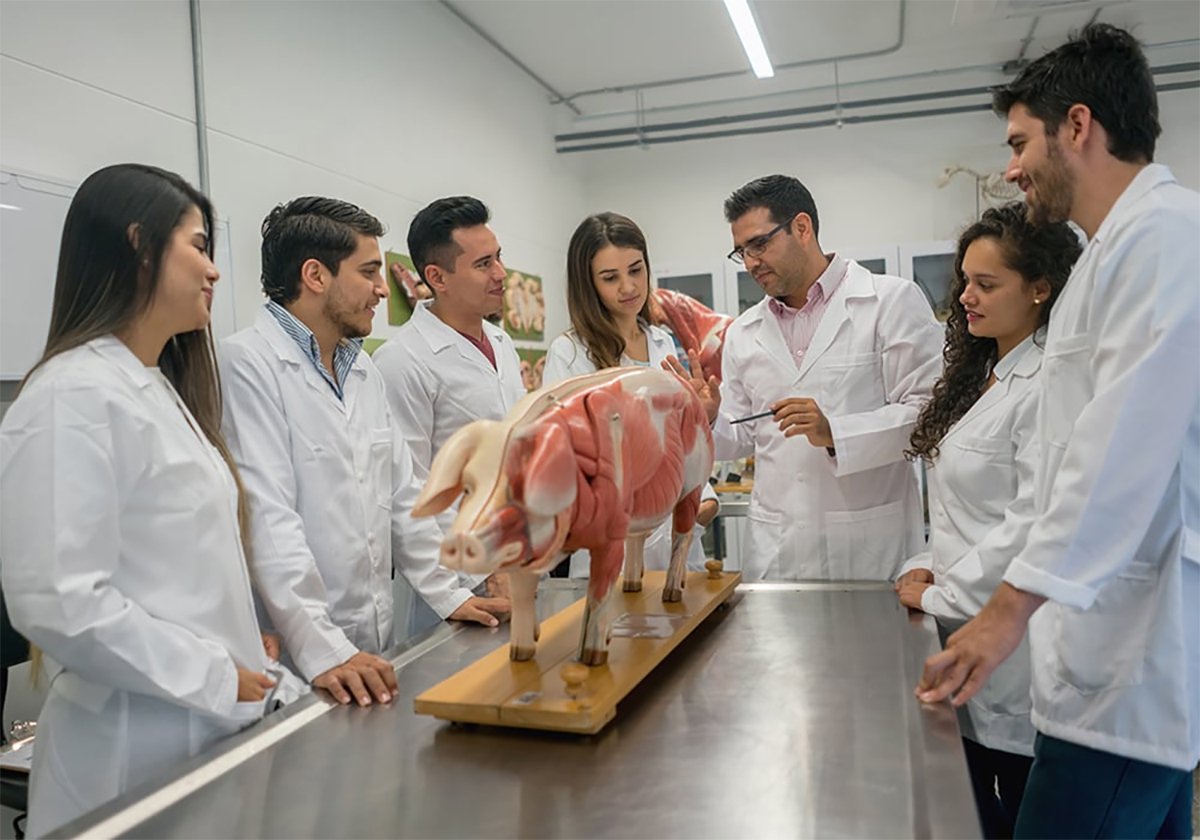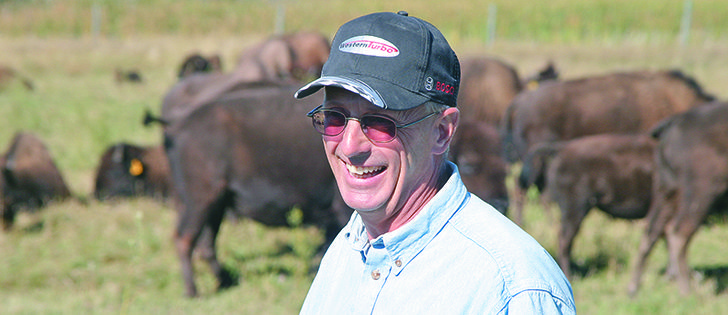Open Farm Day | Ranch tours showcase animals and allow producers to promote benefits of meat
INWOOD, Man. — Ken Overby spent much of last month doing something that he seldom had time for in the past.
“I’m just lying around,” said Ken.
“I just got a new hip.”
Ken and Iris Overby operate a bison operation of more than 400 animals on 19 quarter sections of fenced land in the rough terrain of Manitoba’s Interlake.
That’s a busy bison farm, but both Ken and Iris spent decades working full time as teachers, just doing their bison work on nights, weekends and summers. Being busy is a way of life for them.
Read Also

Students urged to consider veterinary medicine
Alberta government makes $86.5 million investment in University of Calgary to double capacity for its veterinary medicine program to address labour shortages in the field.
“We don’t have to look hard to find something that needs doing,” said Iris during a recent Open Farm Day while Ken repeatedly tractor-pulled wagon loads of people to the pasture to meet the bison.
“We like to be busy.”
Ken’s hip surgery has forced him to sit back and accept help from friends, neighbours and a brother as he gets better, and he’s had to take time off from his current retirement gig: full-time teaching at a private school in Stonewall, Man.
Iris has had to take on extra tasks with Ken out of commission, but it won’t test her abilities much. She was working as a full-time teacher until two years ago.
The Overbys have found a way to be productive farmers in the generally infertile land of the Interlake. There are pockets of good cropland in the region, but most is marginal and even cattle production is a challenge in many areas. The land is rocky and large areas can be flooded in years such as 2011. As well, it takes a lot of land to support an animal.
The couple, who met as teachers while working at Warren Collegiate in Warren, Man., bought their current farm from Ken’s parents in 1985. Ken liked teaching, but was spending most of his free time helping out on his family’s farm, so he and Iris decided to build their own farm.
Ken’s parents kept their own farm and remained in the business, but Ken and Iris moved onto a farm that his parents had bought in 1968.
The elder Overbys had originally run it as a dairy operation, but it eventually became a beef farm, which fit well with Ken and Iris, who already had their own beef herd.
However, Ken had become in-trigued with bison as a form of natural life and started thinking about switching the farm from commercial cattle to commercial bison when it became a real industry.
Ken and Iris bought one bull, nine heifers and two cows in 1994 and expanded from there. They survived the boom and bust of the alternative livestock sector in the late 1990s and the BSE crisis of the mid-2000s.
Ken said their off-farm jobs as teachers kept them in business in the bad days because the main destination for slaughter animals disappeared when the U.S. market was shut, ruining many farms.
Teaching and farming at the same time aren’t easy, but Ken said they are able to do it because bison are low-management animals. They are ideally adapted to the Prairies, can be bale-fed on pastures for most of the winter and don’t need help calving.
The couple don’t think they could have managed hundreds of beef cattle while also working full time.
Their busy life hasn’t turned their two children off of agriculture.
Son Neil, 28, got an agriculture degree at the University of Manitoba, has a small, purebred Gelbvieh herd and works as a crown lands representative for Manitoba Agriculture near Ste. Rose du Lac.
Daughter Jillian, 22, is in her second year of an animal health technician program at Lakeland College in Vermilion, Alta.
“They both seem to like agriculture,” said Ken.
Iris was kept busy during Open Farm Day greeting each group of urban residents that showed up at the farm, making sure everyone received lemonade and learned something about life as a bison rancher.
Ken spent a hour with each group of people he took out to the pasture, explaining the life of bison and how meat consumption demand has allowed the species to bounce back from its endangered status.
“If people didn’t eat bison meat, we couldn’t afford to keep them,” he said.
“I like showing people what a bison herd looks like up close.”
As he spoke to one group of visitors in the pasture, he apologized for limping and getting around slowly and gingerly.
However, his cane came in handy as a pointing device, and he often seemed more like a teacher than a farmer as he described how a bison herd behaves.
For Ken and Iris, the two worlds — teaching and farming — have always been combined.
In mid-October, Ken was doing neither as his hip mended after surgery, but he was keen to get back as soon as possible because, as Iris said, it’s never hard to find something that needs to be done around the farm.
















